Communication Skills Chapter Notes - Class 10 PDF Download
Session 1 : Method of Communication
The word ‘communication’ comes from the Latin word commūnicāre, meaning ‘to share’. Communication is a method where we can exchange the information between two or more people.
Communication is the process of conveying information, knowledge, feelings, or ideas through speaking, writing, or using body language.
Communication has three important parts –
- Transmitting: When someone sends a message or information to others.
- Listening: The receiver listens to or understands the message.
- Feedback:The receiver gives a message to the sender in the form of feedback to complete the communication cycle.
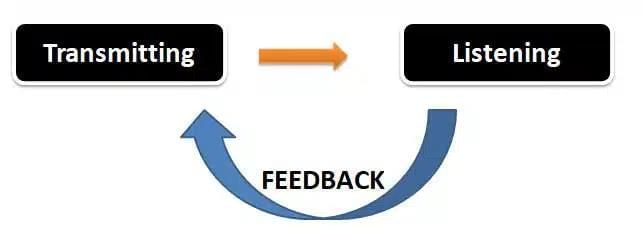
The various elements of a communication cycle are:-
- Sender: The person beginning the communication.
- Message: The information that the sender wants to share, like ideas, information, questions, etc.
- Channel: Channel means how the message is sent to others, like using spoken word, gestures, emails, phone calls, etc.
- Receiver: The person who receives the message.
- Feedback: The receiver’s acknowledgement and response to the message.
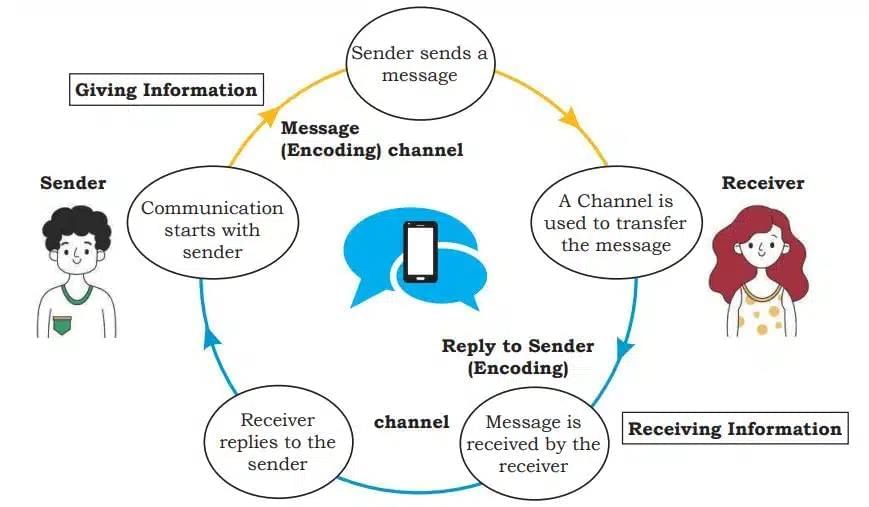
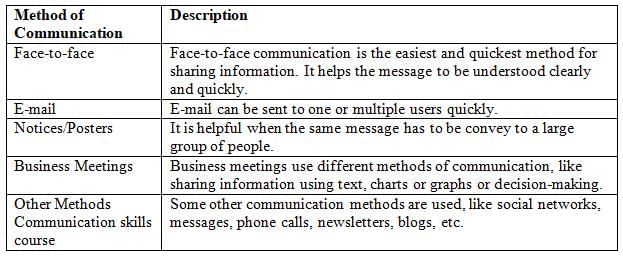
Session 2: Verbal Communication
Verbal communication is an exchange of information using spoken or written words to convey thoughts, ideas and emotions. Speaking is one of the most effective and commonly used ways of communicating.
There are several types of verbal communication –
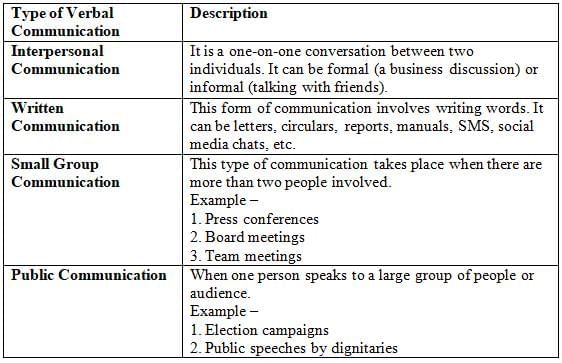
Advantages of Verbal Communication
- Ease: Simple and straightforward way of communication.
- Adaptability: Allows for adjustments based on the listener’s response.
- Immediacy: Enables quick exchange of information.
- Clarity: Facilitates clear understanding through spoken words.
Disadvantages of Verbal Communication
- Dependency on Words: Relies on the accuracy of spoken words, leading to potential misunderstandings.
- Lack of Permanent Record: Information is not always documented, making it challenging to reference.
- Limited Non-Verbal Cues: Absence of visual and body language cues can lead to misinterpretations.
- Potential for Confusion: Without precise wording, meanings may be unclear or confusing.
Mastering Verbal Communication:
- Clarity: Use clear and simple words; avoid using confusing words.
- Active Listening: Pay attention to what others are saying.
- Effective Tone: Speak in a friendly and respectful way.
- Conciseness: Say only what is needed.
Session 3: Non-verbal Communication
Non-verbal communication is a process of conveying messages without using spoken or written words. Non-verbal communication uses facial expressions, body language and gestures for conveying the message.
In everyday communication:
- 55% communication is done using body movements, face, arms, etc.
- 38% communication is done using voice, tone, pauses, etc.
- Only 7% communication is done using words.
Example of the Non-Verbal Communication

What are the Different types of non-verbal communication
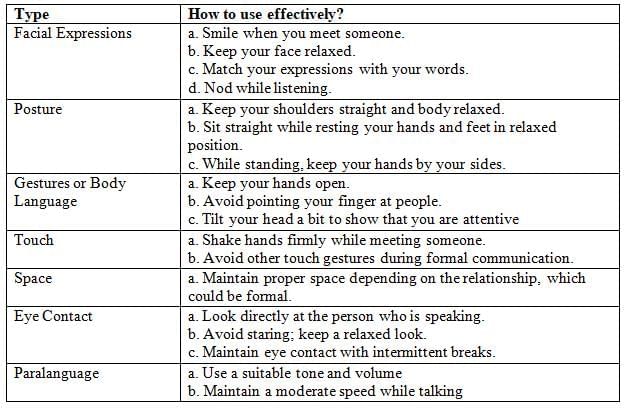
Visual communication conveys the messages through images, pictures, videos and symbols. It is an effective way of communication.
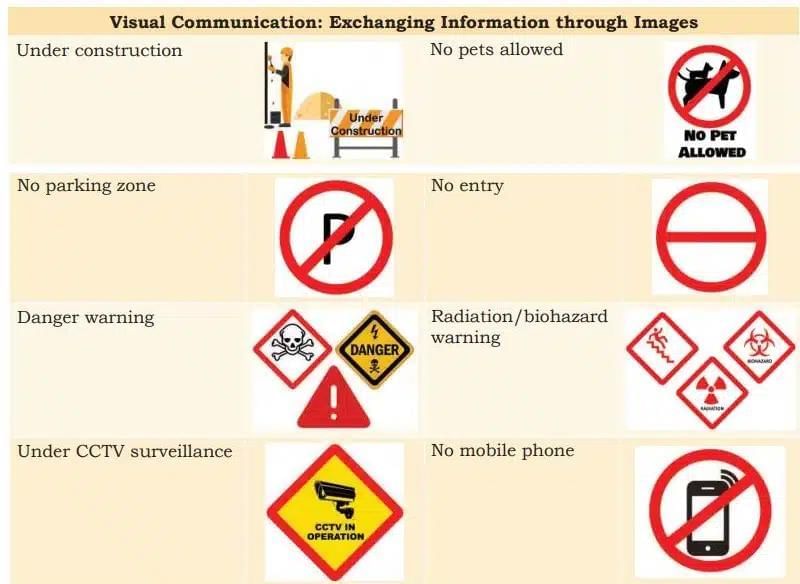
Session 4: Communication Cycle and Importance of Feedback
When a sender shares information, the receiver responds with feedback, which can be positive or negative. Feedback is an important part of the communication cycle.
Effective feedback is always-
- Specific
- Helpful
- Kind
Type of Feedback Examples
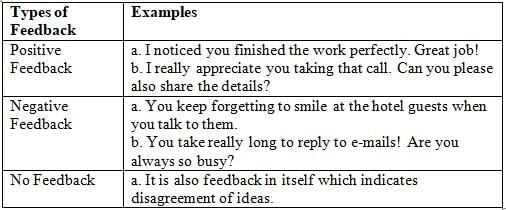
Good feedback is one that –
- Specific
- Timely
- Polite
- Offering continuing support
What is the importance of Feedback?
- It validates effective listening
- Motivation
- Learning Boost
- Performance Improvement
Session 5: Barriers to Effective Communication
Essential Principles for Effective Communication:
- Clear: Make your message easy to understand.
- Concise: Use a simple and short message; avoid unnecessary details.
- Concrete: Use specific words and real facts.
- Correct: Check your spelling and grammar to avoid confusion.
- Coherent: Ensure your words logically connect and relate to the main topic.
- Complete: Include all necessary information for a complete message.
- Courteous: Be polite, respectful, and truthful in your communication.
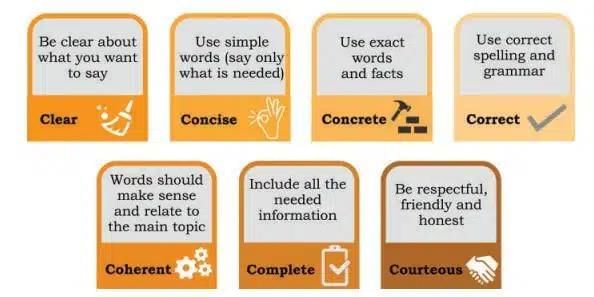
Different barriers to Effective Communication:
- Physical Barriers: When distance, noise or surroundings create challenges, it is known as a physical barrier. For example, a weak phone signal can create physical barriers.
- Linguistic Barriers: A language barrier occurs when people use different languages. It is the most common communication barrier.
- Interpersonal Barriers: Sometimes, people misunderstand each other’s messages because of tone, emotions or personal biases.
- Organisational Barriers: When the organisational hierarchy, rules and regulations, procedures, policies and norms are not followed by the employee.
- Cultural Barriers: Cultural barriers are when people of different cultures are unable to understand each other’s customs, resulting in inconveniences and difficulties.
Ways to overcome Barriers of Effective Communication:
- Use simple language
- Do not form assumptions on culture, religion or geography
- Try to communicate in person as much as possible
- Use visuals
- Take help of a translator to overcome differences in language
Be respectful of other’s opinions
Session 6: Writing Skills — Parts of Speech
Writing skills are part of verbal communication and include e-mails, letters, notes, articles, SMS/chat, blogs, etc. all these forms of written communication, we use sentences to express ourselves.
Sentence: Sentence is a group of words that communicates a complete thought. A sentence always begins with a capital letter, and it always ends with a question mark, full stop or exclamation mark. For example, Pooja goes to school.
Phrase: The group of words, which does not make complete sense, is known as a phrase. For example, Pooja goes.
What are the different capitalization rules in communication cycle?
We know that all sentences begin with capital letters. However, there are certain other points in a Sentence where we should use capital letters. ‘TINS’ is a set of simple rules that help you capitalise words correctly.
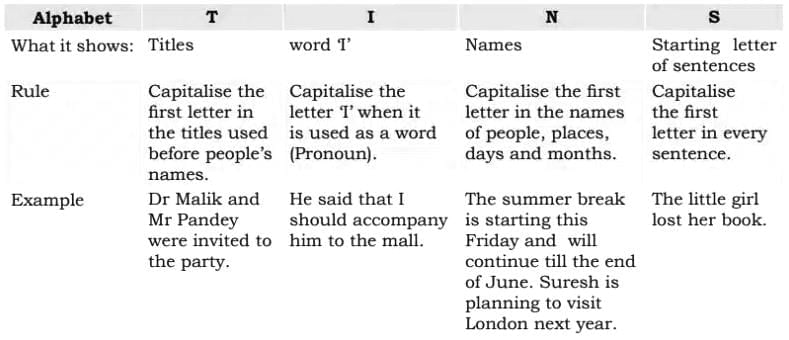
Certain set of marks, such as full stop, comma, question mark, exclamation mark and apostrophe are used in communication to separate parts of a sentence for better clarity of message.
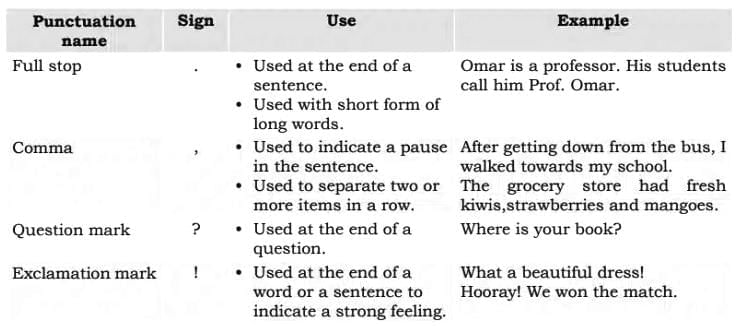
Basic parts of speech:
The part of speech indicates how a particular word functions in meaning as well as grammatically within the sentence.
- Noun – Names a person, place, thing, or idea. (e.g., dog, city)
- Pronoun – Replaces a noun to avoid repetition. (e.g., he, she, it)
- Verb – Expresses action or state of being. (e.g., run, exist)
- Adjective – Describes or modifies a noun. (e.g., happy, tall)
- Adverb – Modifies a verb, adjective, or another adverb. (e.g., quickly, very)
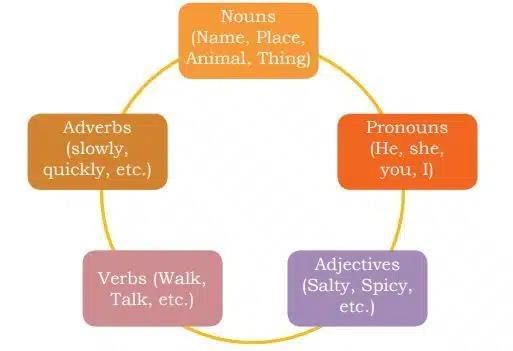
Different supporting parts of speech:
- Article – A type of adjective that defines a noun as specific or unspecific. (e.g., a, an, the)
- Conjunction – Connects words, phrases, or clauses. (e.g., and, or, but)
- Preposition – Indicates the relationship between a noun and another word. (e.g., in, on, under)
- Interjection – Expresses strong emotions but is not grammatically related to the rest of the sentence. (e.g., wow, oh)
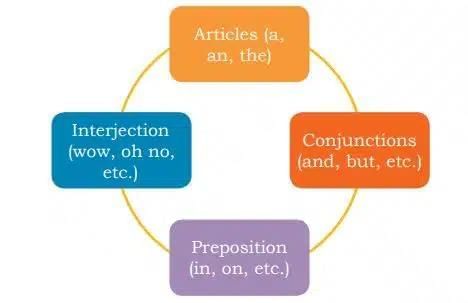
Session 7: Writing Skills—Sentences
A sentence is a group of words that conveys a complete thought. It consists of a subject (the main actor or topic) and a predicate (the action or what the subject does). A sentence can be simple, compound, or complex, and it is the basic unit of communication in written and spoken language.
Different parts of a sentence:
There are basically three different parts of sentence –
- Subject – The person or thing performing the action.
- Verb – Describes the action carried out by the subject.
- Object – The person or thing that receives the action.
Different types of objects:
In a sentence, there can be two types of objects — Direct and Indirect.
Direct Object:
- Receives the action directly from the verb.
- Answers the question “what” or “whom.”
- Example: She ate an apple.
Indirect Object:
- Indirectly affected by the action, often preceded by a preposition.
- Answers the question “to whom” or “for whom.”
- Example: He gave a gift to her.
Different types of sentences:
- Statement or Declarative Sentence
- Question or Interrogative Sentence
- Emotion/Reaction or Exclamatory Sentence
- Order or Imperative Sentence

Active and Passive Sentences
Active Sentence:
- The subject performs the action.
- Example: The cat (subject) chased the mouse (object).
Passive Sentence:
- The subject receives the action.
- The object becomes the focus.
- Example: The mouse (object) was chased by the cat.
Paragraph:
A paragraph is a collection of sentences centered around a single idea. It starts with a topic sentence, followed by supporting details, and often ends with a concluding sentence. This structure enhances organization and readability in written communication.
FAQs on Communication Skills Chapter Notes - Class 10
| 1. What are the different methods of communication and how do they impact interactions? |  |
| 2. Why is feedback important in the communication cycle? |  |
| 3. What are some common barriers to effective communication and how can they be overcome? |  |
| 4. What are the key components of writing skills related to parts of speech? |  |
| 5. How do sentences contribute to effective writing skills? |  |














